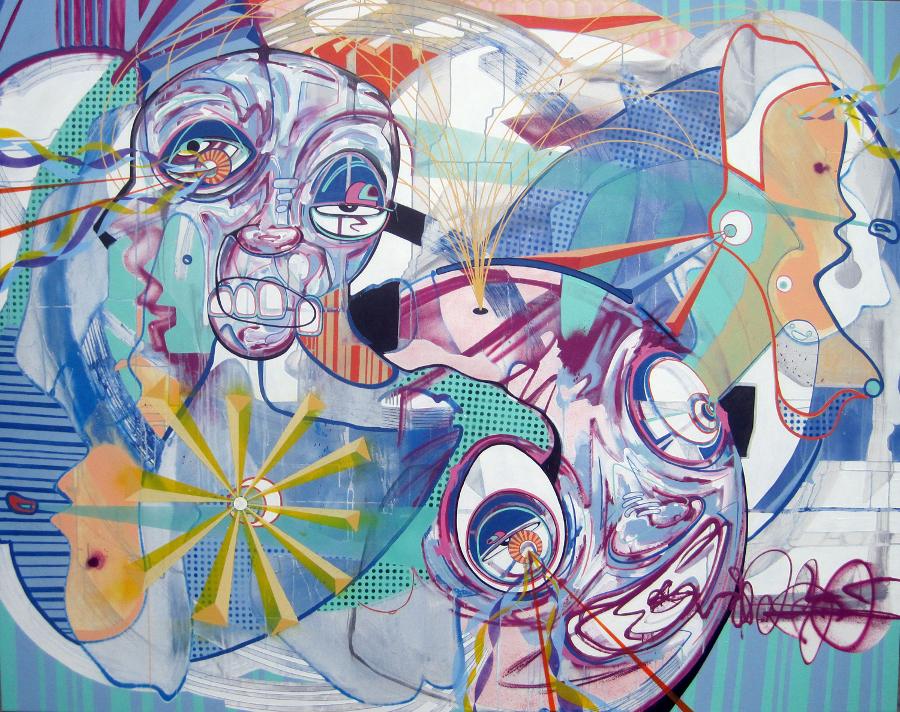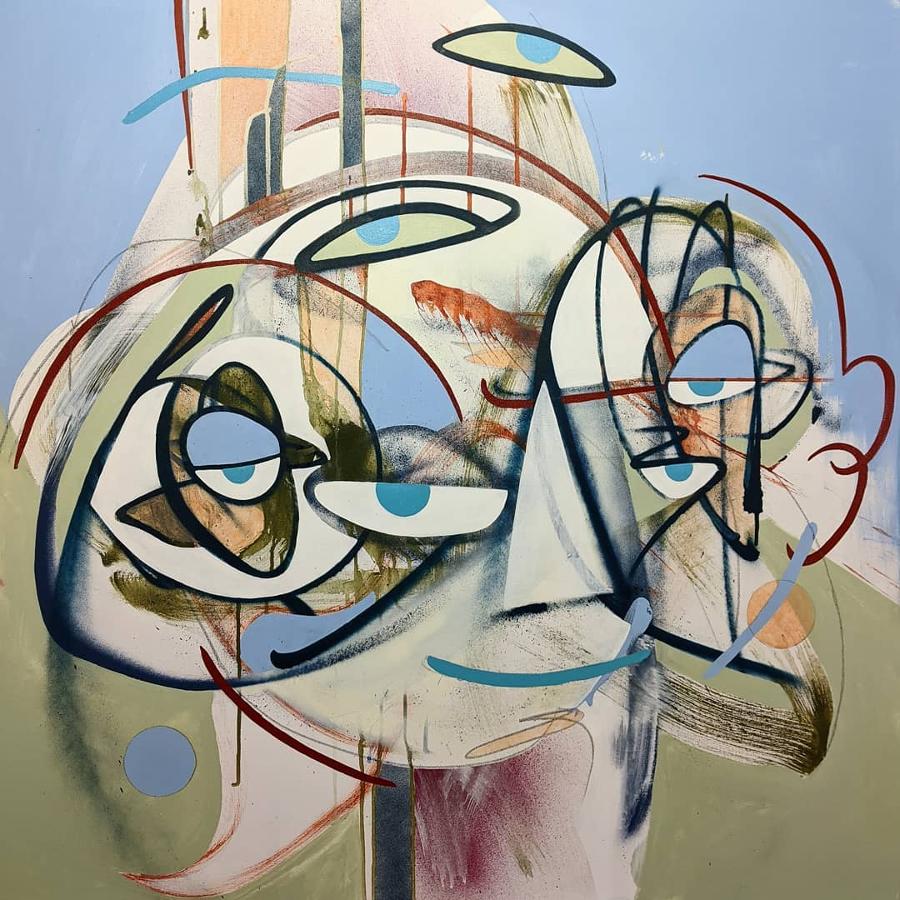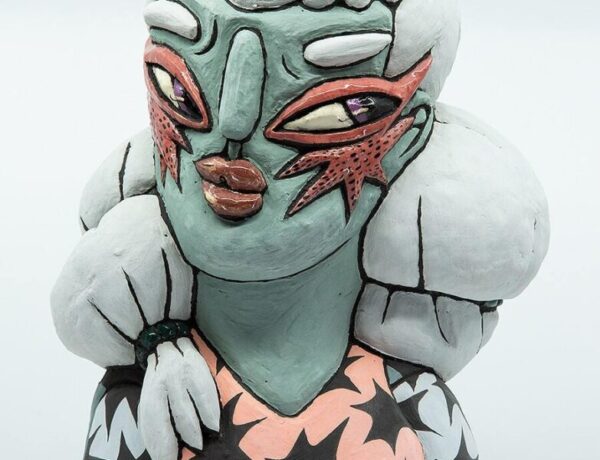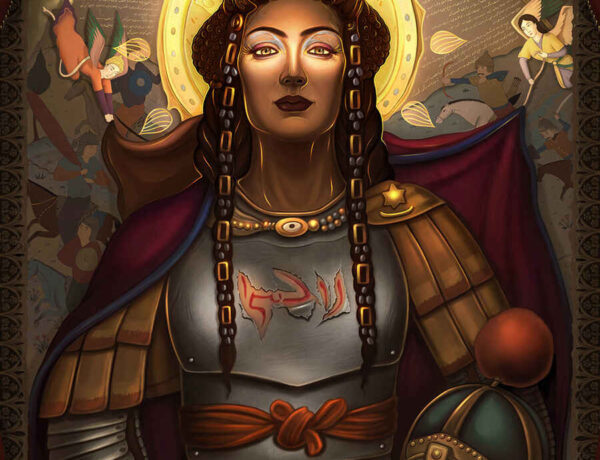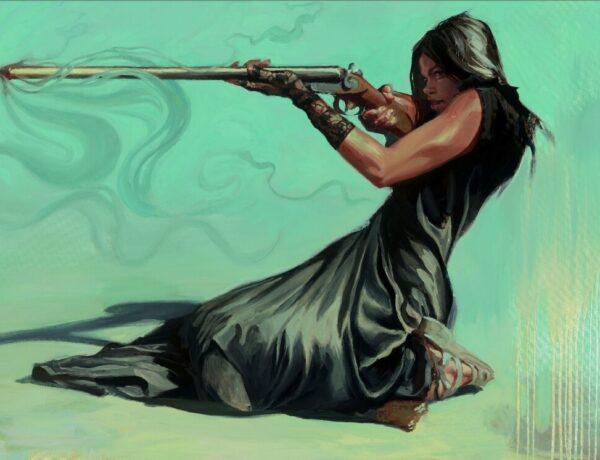Let’s just say that an artist manifests purely for inner fulfillment. Do they wonder whether the fruits of their labors are worthy? No. Soliciting external validation from others is simply not their style. Does that render their creative output slightly less than, simply because outside critiques aren’t a part of the equation? The answer becomes far more apparent when we consider the infinite visual symphonies that Mother Nature composes. Regardless of humanity’s thoughts, Gaia would still create every single empyreal marvel because the act of manifesting visual beauty is a core necessity. While Eric Wixon isn’t in the habit of pulling 8.7 million species out of his top hat, the driving force of nature is mirrored in his canvas pursuits. As it so happens, his raison d’être is simply just grounded in the call of the soul.
I’m just singing my song. My view of art is that it’s holistic and inseparable from life.
Any art aficionado will certainly appreciate the discussion that we had with Eric Wixon on a ‘talking shop’ level. Quite unexpectedly, however, the purity of intent that guides the post abstract portrait artist’s practice is what really swept us off our feet. Life has been rather strange in recent years, which has inspired so many of us to re-evaluate our priorities. For some, setting and fulfilling far more substantial goals has become of paramount importance.
Upon reading our interview with Eric Wixon, there is one thing that will trickle down into your psyche, quite possibly even spawning your own personal creative renaissance. When you strip away all of the white noise of the art world in order to focus solely on manifesting heart-centric output, that’s the moment when your most authentic creative life will receive you with open arms. Ready to give yourself a nice, long, self-validating bear hug?
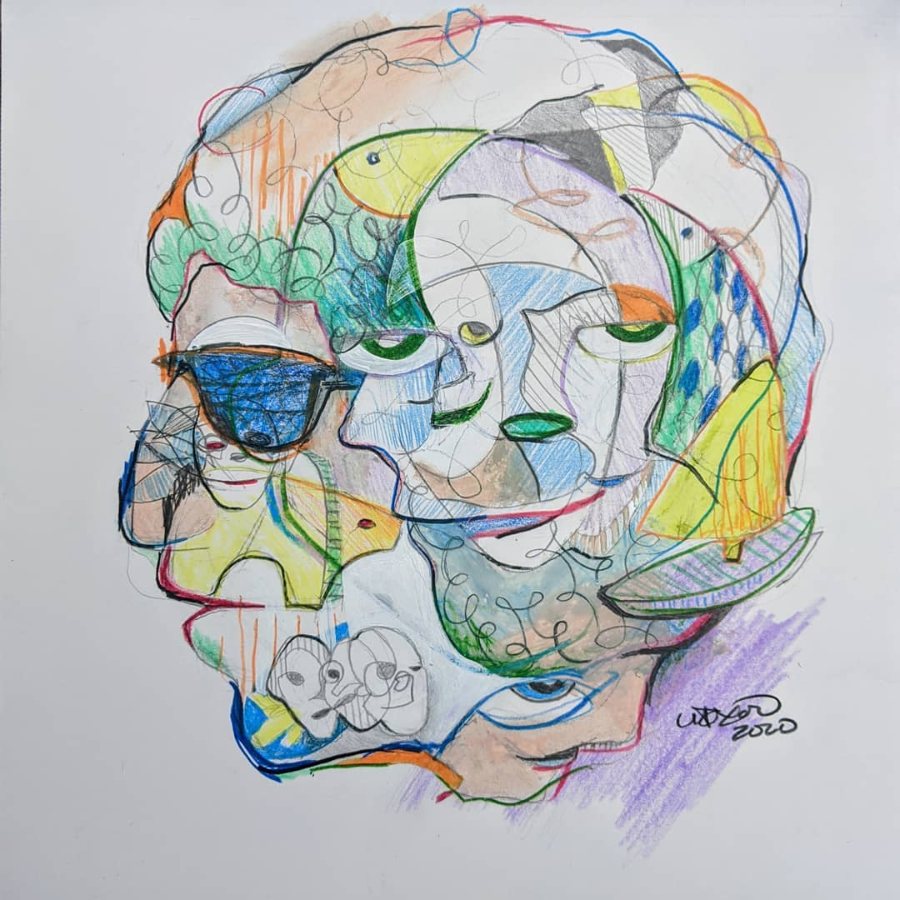
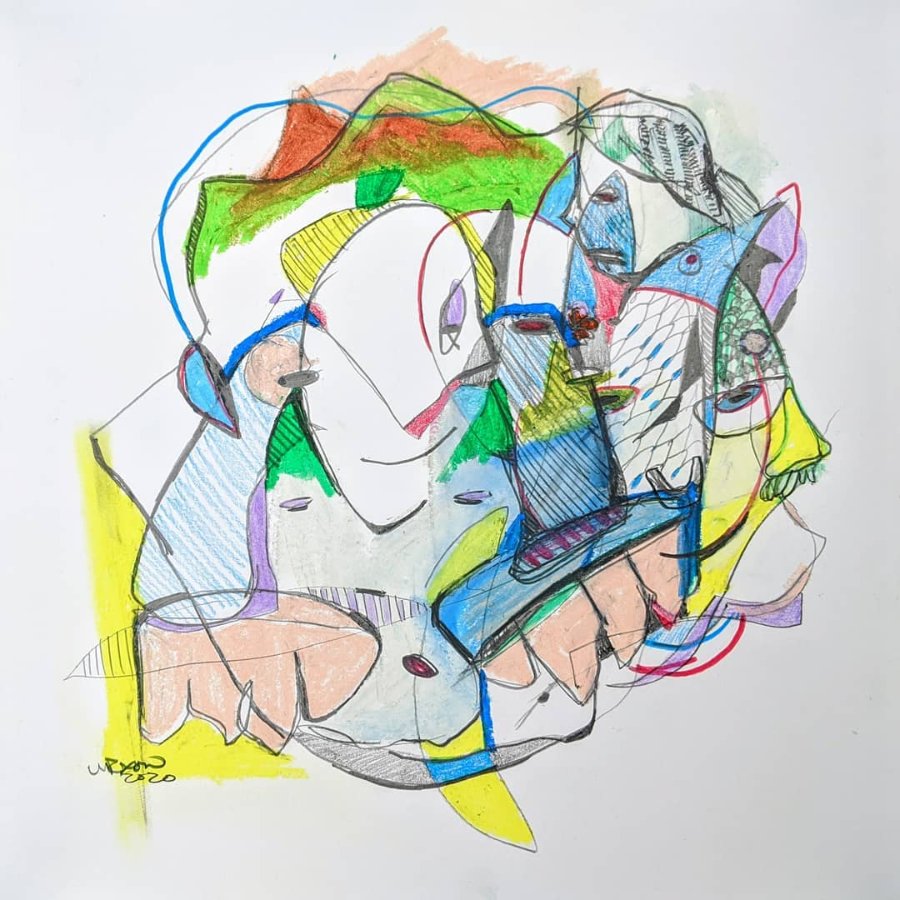
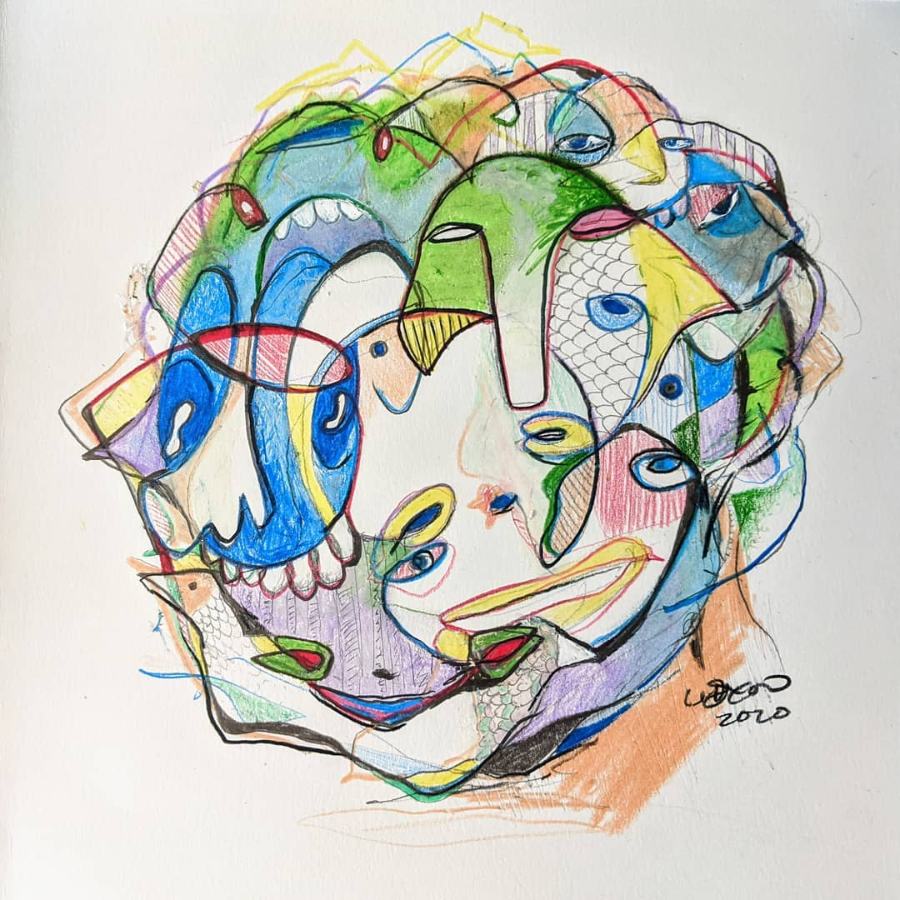
Interview With Eric Wixon
Through the lens of your youth, you regularly saw random imagery (faces, numbers, animals, etc.) in unlikely places such as Formica. What does it take to tease those visuals – which are an integral part of your current artistic aesthetic – out of your mind today?
Back in my youth, it was a self-entertaining activity. Plenty of people can see various images in clouds, so it’s not necessarily a superpower. I ingested heaps of hallucinogens as a teen, which I suppose could have momentarily influenced my ability to detect random shapes. I adulthood, though, I just make a conscious effort to indulge my child-like curiosity. It has become a way for me to understand myself.
How early in your art journey did you begin to commit the random images that you saw onto canvas?
I clearly remember pulling faces out from the doodles that littered my notes during my freshman year of high school. However, I’d be willing to bet that I started at an earlier age.
I’m not a successful entrepreneur, but in my heart, I believe that I am a successful artist. Maybe someday I’ll be both. Sometimes it feels more like throwing spaghetti at the wall and having blind faith that someday it will work itself out.
Were you an art all the time kind of child or was the act of creating just a fun hobby?
When I look back at my childhood creative pursuits with an adult perspective, I believe that I was an art all the time kind of child. Creating a fort in the woods is easily as artistic as drawing a drag car that looks like a carrot, both of which were common in my childhood.
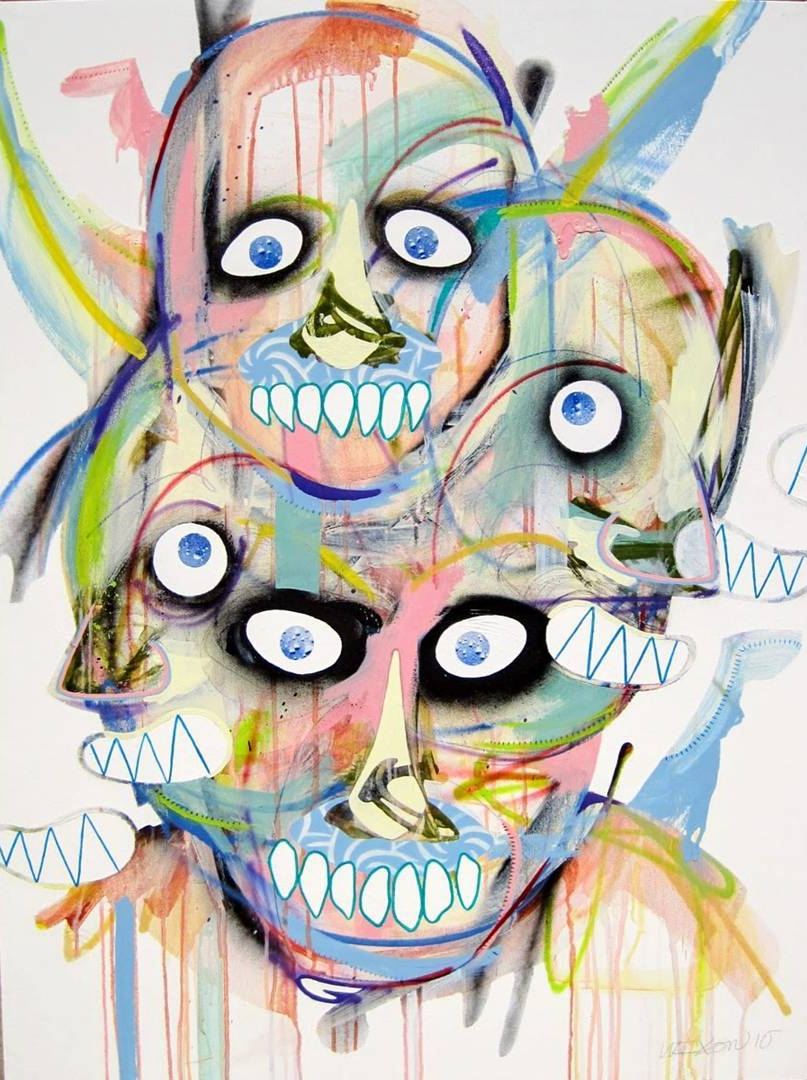
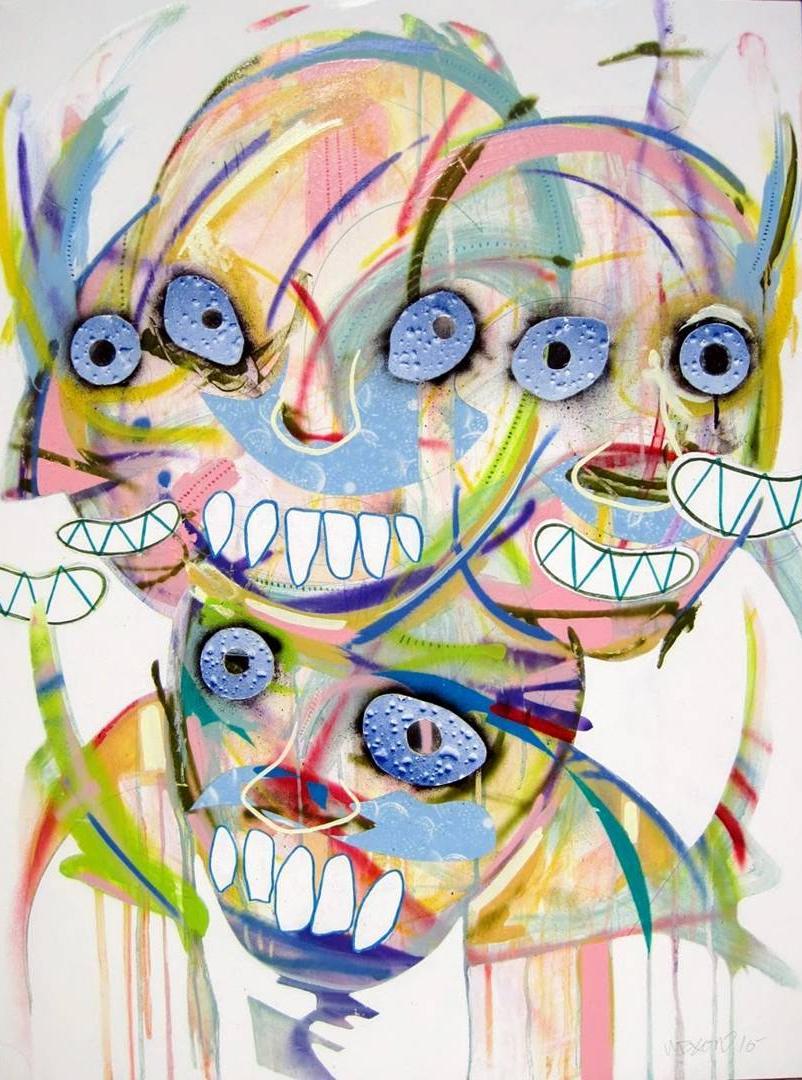
Did your family or teachers encourage you to transform your view of the world into art?
Yes. Initially, I think everyone was encouraging a skill set. (“Look how well he can draw a tree…paint a still life, etc.”) My parents were very supportive. They thought I was artistically talented and even paid for my higher education. The main caveat was that if I chose to study art, I’d also have to pursue art education, as well. Things changed in college when my professors encouraged a perspective.
My art, which functions primarily as a self-awareness tool, emerges through an intuitive process. It enables me to process information and derive meaning from my life experiences. While I make it for me, there’s nothing better than knowing that it actually helped another human.
In what way did your creative focus – which transitioned from skills development to perspective – strengthen your artistic voice?
I went through an entire painting class without using paint. Instead, I taped garbage into large anthropomorphic shapes. I whipped sheets of paper with a steel cord as my response to a drawing assignment.
Those types of projects were fun, but explaining them was a frustrating process. That inspired me to create an early painting series titled “an artist statement”, which consisted of four paintings: “this isn’t fucking rocket science”, “but it is good”, “I made it”, “so you analyze it”.
Trying to explain what my art should mean to others always felt like a senseless conundrum. Ideally, each person who views my work will experience various different thoughts and ideas.
At what point in your personal history did art become imperative to pursue?
Engaging in the creative process – regardless of whether or not my art is celebrated – has always been my unwavering core motivation. I began pursuing art full time in September of 2010, but I guess it’s always been more of a personal journey than a career path. I’ve always made art, always will. I plan to continue doing so until death because that is the only certainty that I have in life.
Based on the appearance of my portraits, it may be surprising to learn that I’m actually a pretty chill guy who’s generally at peace. I think my work functions as an outlet to process and release darker energy.
When did your art begin to stylistically crystalize and bear the hallmarks of your current abstract expressionist portraits?
Overall, it’s been a slow, natural progression. I’d say the first sightings were probably early 2000’s, not long after finishing college.
Do you recall specific experiences during your art education and fine art studies at Kent State University that immeasurably impacted your creative approach?
An early discovery for me was the importance of personal connection. I bonded with one of my professors, Elmer Day. Occasionally, we would paint together while discussing various artists or life in general. His personal work was very influenced by DeKooning, which in turn influenced my work, or at least my interest.
I enjoyed many classes at Kent State University that allowed me the freedom to explore my personal art. Nonetheless, it was the musicians I lived with who ended up informing my art more than academic critiques.
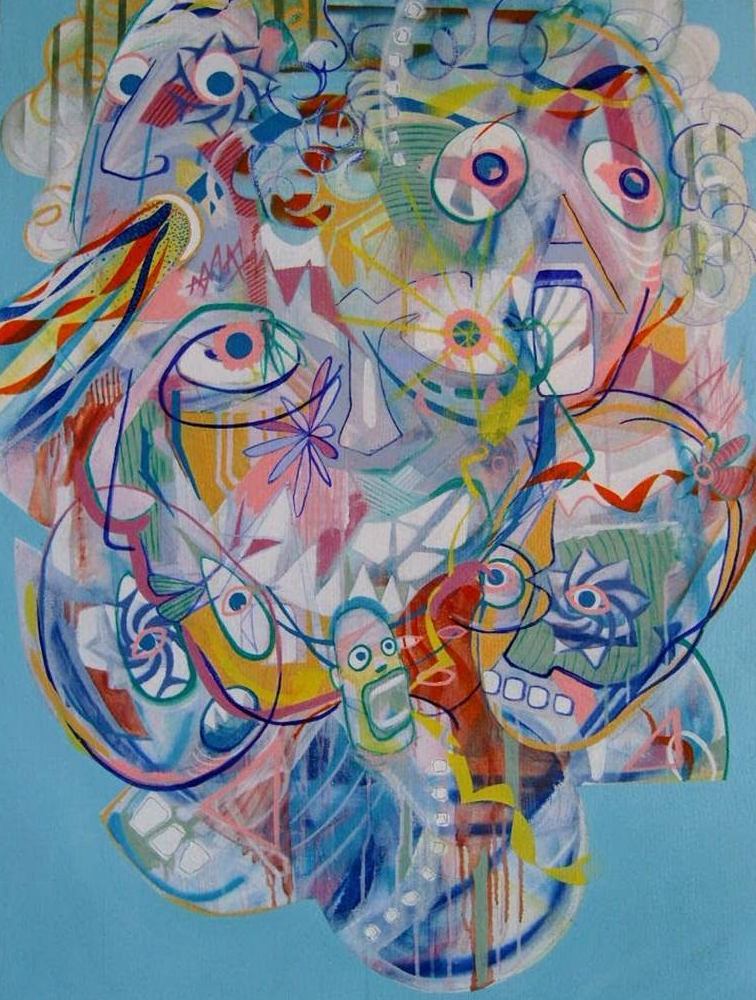

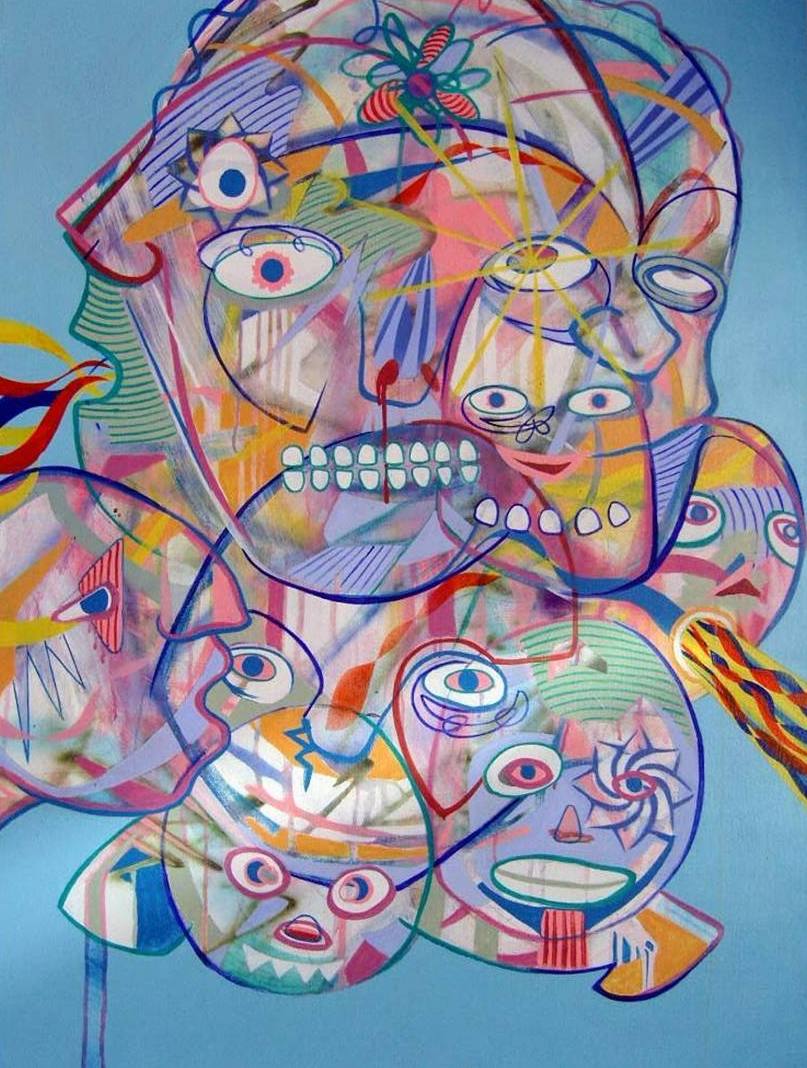
I’ve always made art, always will. I plan to continue doing so until death because that is the only certainty that I have in life.
How would you describe your aesthetic?
I’m a contemporary painter who takes visual cues from various genres, such as surrealism, cubism, expressionism, pop art, graffiti, abstract expressionism, etc. As far as the appearance of my work, I think it will continue to shift over time. I’ve made a fair amount of abstract art, but never stuck with that aesthetic for too long. Maybe that work is waiting for me.
Imagine drawing a pie chart that illustrates how much of your art is impacted by various genres/visual influences. What would that look like?
I suppose that pie would have a lot of slices. There are so many influences from my youth, including skateboard graphics, album covers, MTV videos, surrealism, abstract expressionism. Today, I can probably see 100 artworks while scrolling through Instagram. There’s also the more profound influence of interacting with others, engaging in introspective thought, and experiencing mother nature (which is the best artist there’s ever been).
The hashtags that you favor – such as #thesearchinward, #headyart, #intuitiveart, #selfmotivation, #changingthenarrative, and #internaldialogue – suggest that mental health transparency is an important component of your portraiture. Why does that resonate with you?
In my personal experience, making art is crucial to my well-being. It continues to be a useful tool towards self-awareness. I often idealize that my work may even help others.
You’ve talked about being creatively driven by the search inward. Is your sense of artistic fulfillment tied to how your art positively impacts others?
My art, which functions primarily as a self-awareness tool, emerges through an intuitive process. It enables me to process information and derive meaning from my life experiences. While I make it for me, there’s nothing better than knowing that it actually helped another human.
How do you feel when the beholder simply just appreciates the pretty pictures that you create (without going below the surface)?
I’m completely flattered if someone just enjoys my work on a superficial level.
Engaging in the creative process – regardless of whether or not my art is celebrated – has always been my unwavering core motivation.
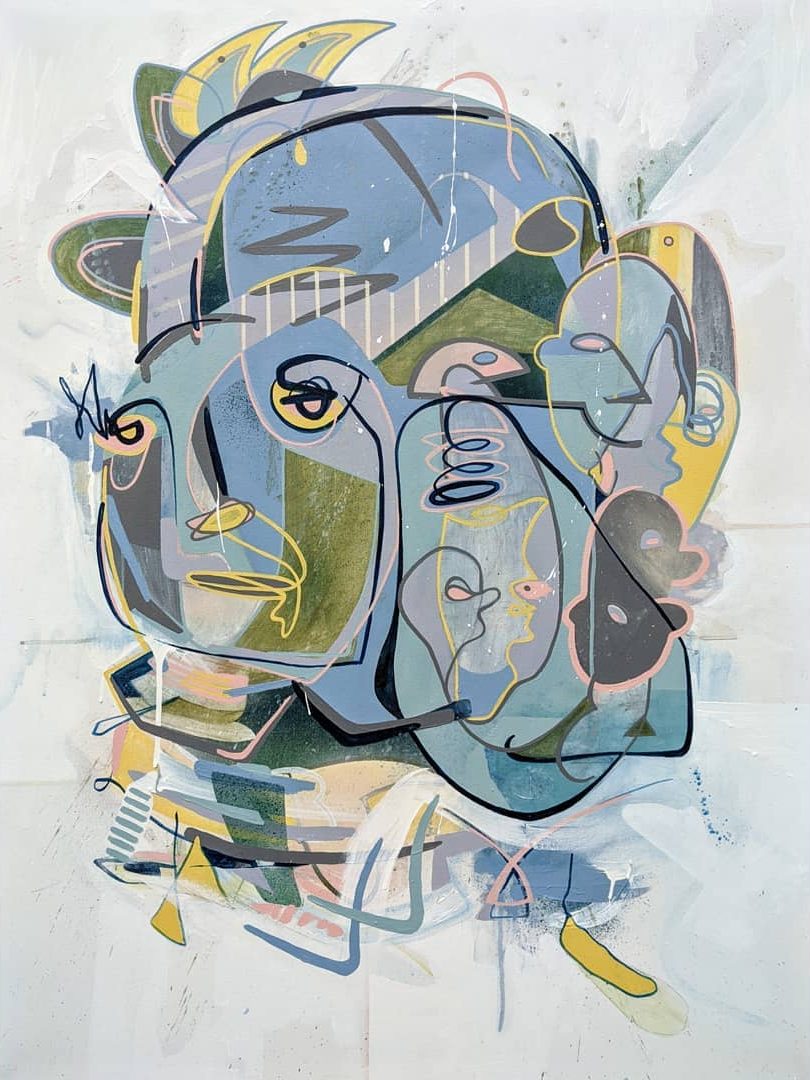
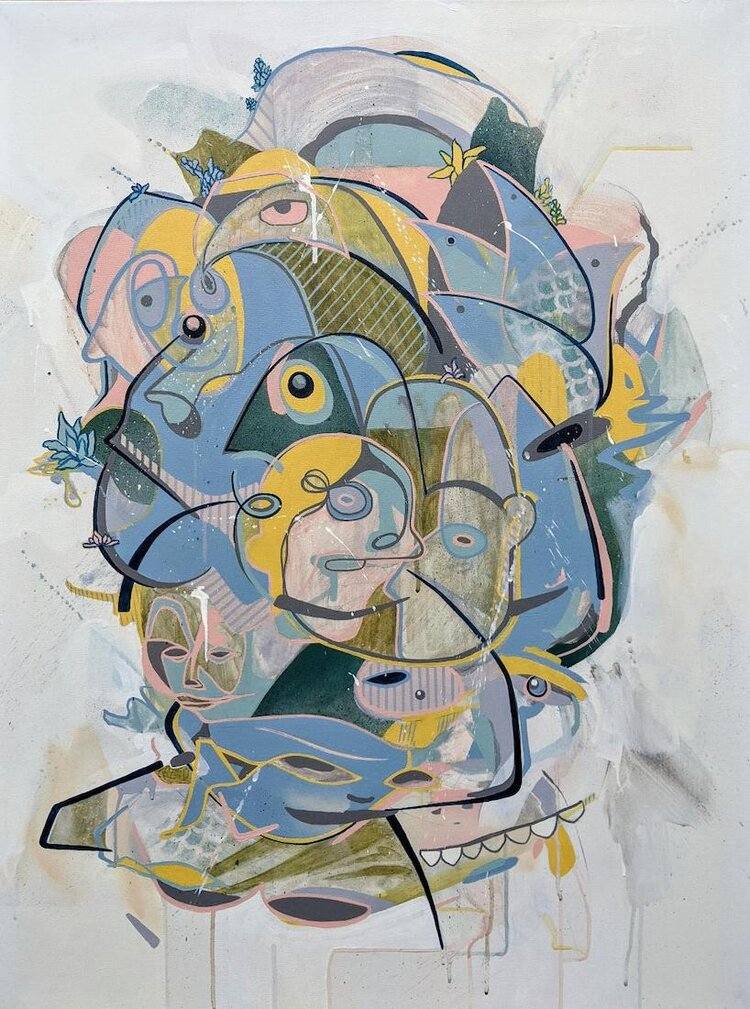
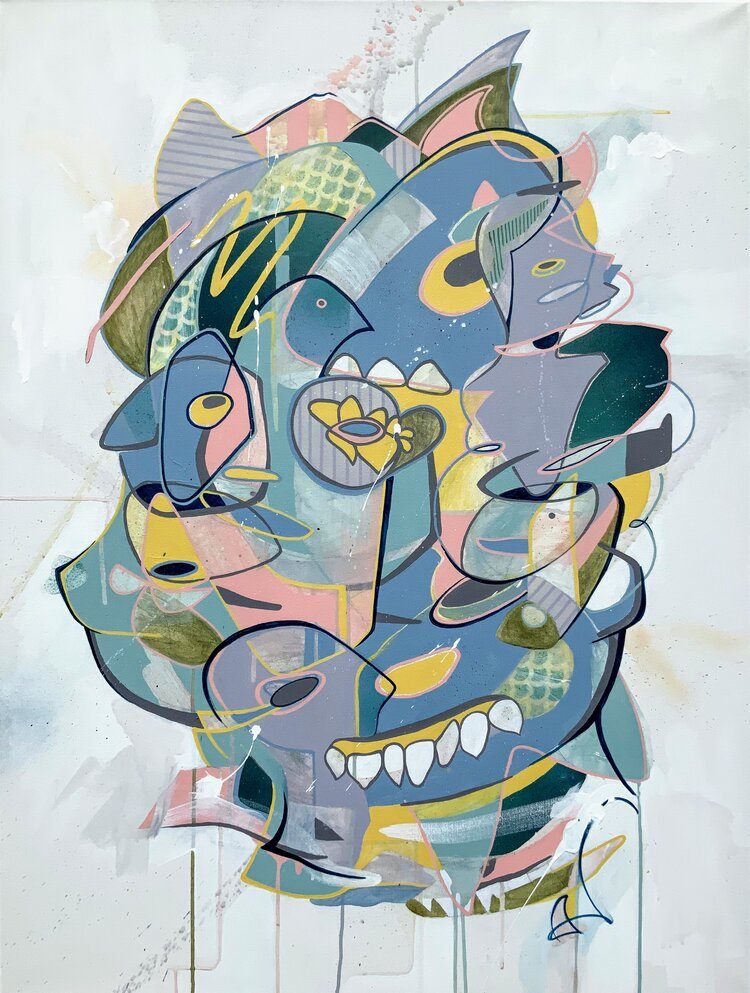
Has manifesting your style of portraiture helped you to work through any of the things that have burdened your mind and soul?
Absolutely. My recent series “Internal Dialogue” served as a self-motivational speech towards success in art. I also used it as an outlet to decompress the tumultuous aspects of a romantic relationship. Additionally, it enabled me to untangle and embrace all the feelings associated with the recent loss of my father.
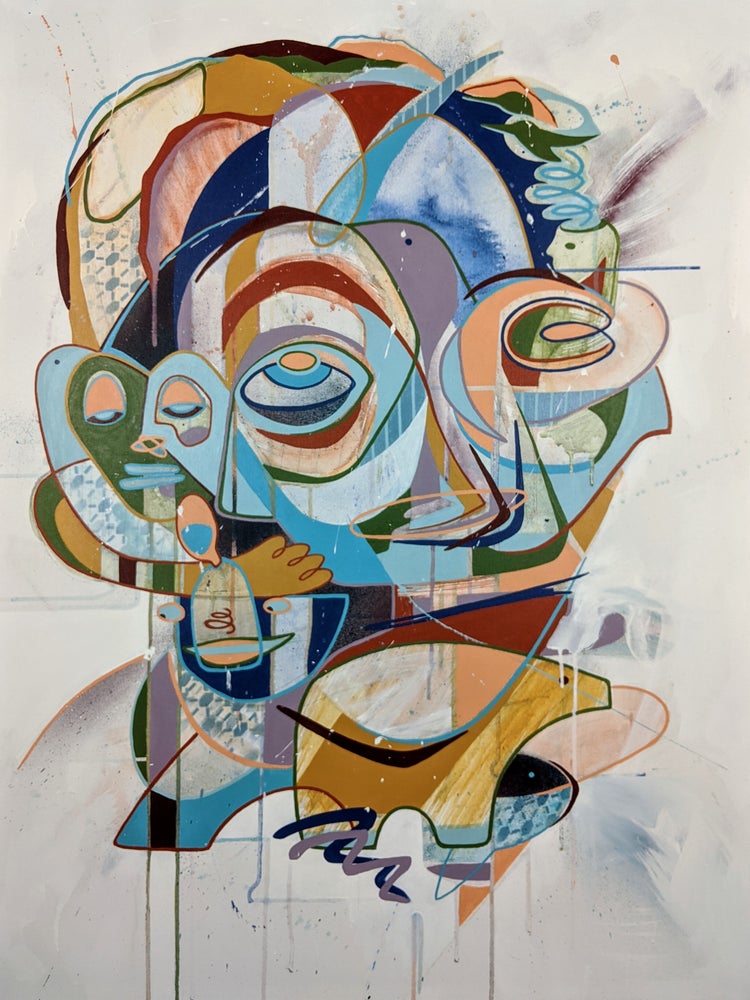
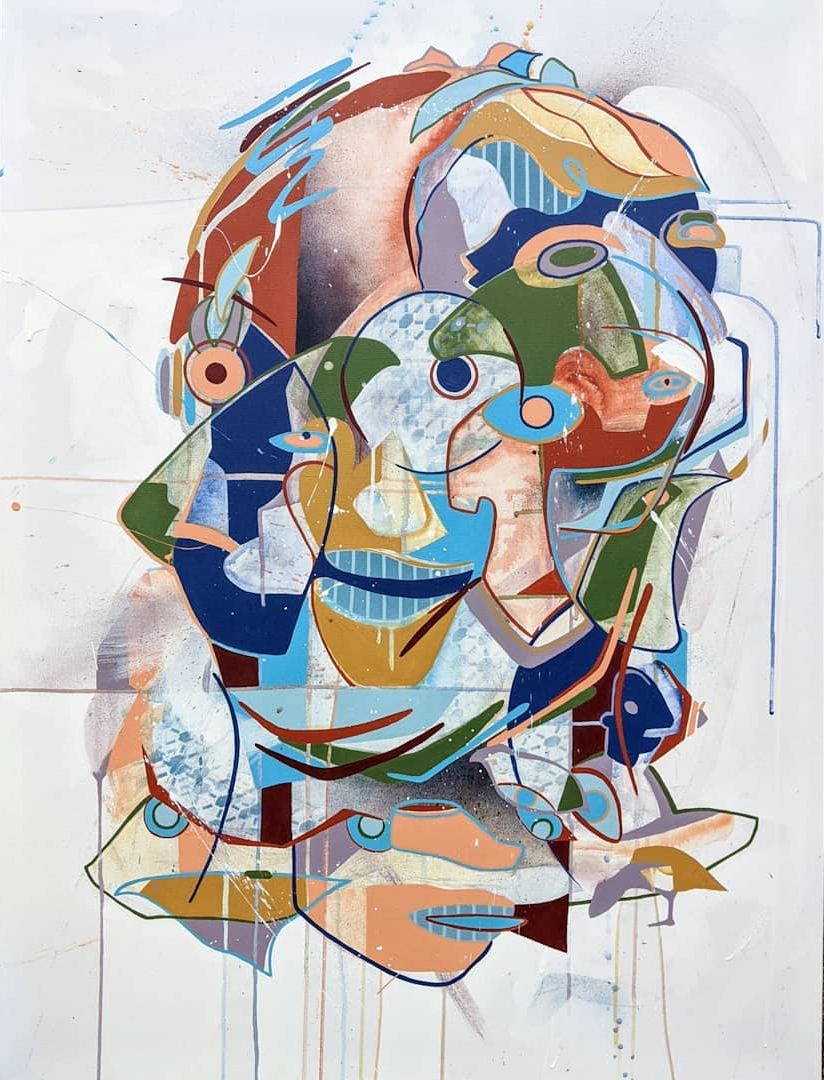
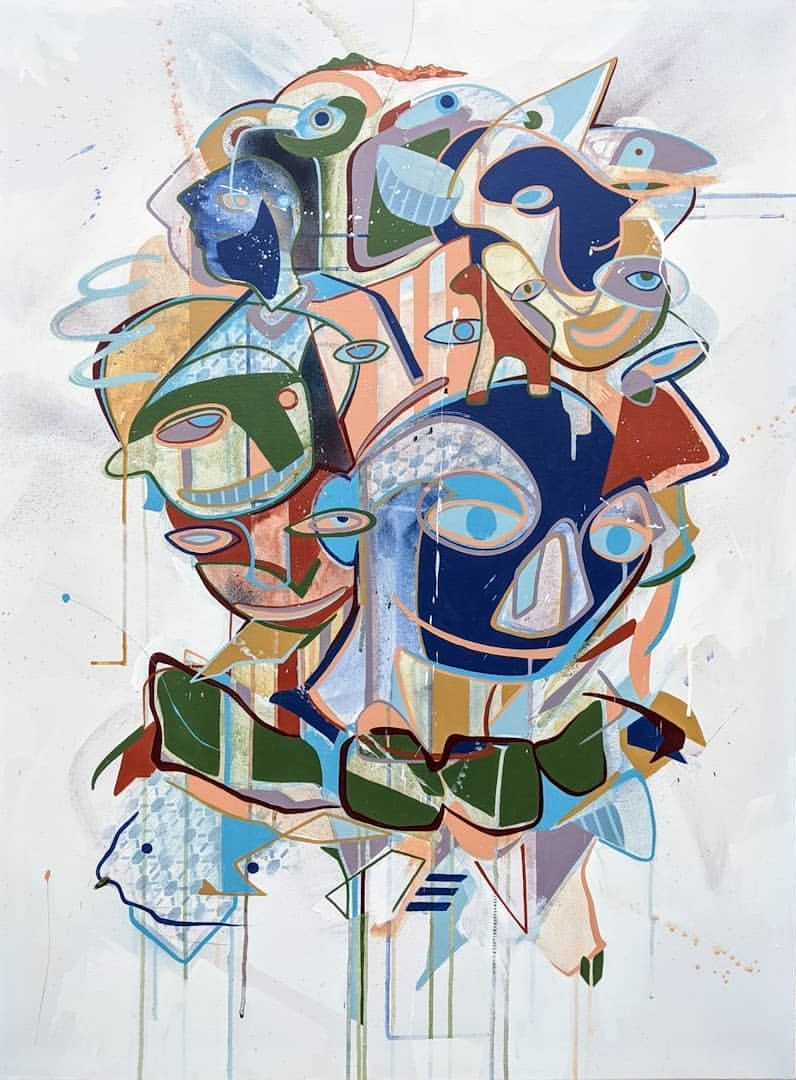
Your portraits often seem to depict an internal struggle or perhaps a general level of restlessness. Is this the way that you view people in general, or are the images that you create entirely auto biographical?
My art is primarily auto biographical but people definitely influence it, as well. Based on the appearance of my portraits, it may be surprising to learn that I’m actually a pretty chill guy who’s generally at peace. I think my work functions as an outlet to process and release darker energy.
Your work seems to be emblematic of a perpetual quest for understanding. How has being an artist helped you to gain more clarity in your life?
It warms my heart to hear you perceive my work that way. I think that creating art is an active platform for contemplation. Sitting in front of a lake could probably help me gain similar insight, but I believe the element of creation amplifies the benefit.
In my personal experience, making art is crucial to my well-being. It continues to be a useful tool towards self-awareness. I often idealize that my work may even help others.
Since your portraiture reflects the journey of your own personal evolution and your quest to find answers, where do you feel that you are at this point in time?
“As long as I know right from wrong, I’ll be okay I’ll sing my song” – Aesop Rock.
I’m just singing my song. My view of art is that it’s holistic and inseparable from life.
With each new portrait that you manifest, does your inner life continue to make much more sense to you?
Yes, but typically in incremental doses that aren’t all that noticeable. In a way, it’s similar to a plant growing or a person aging.

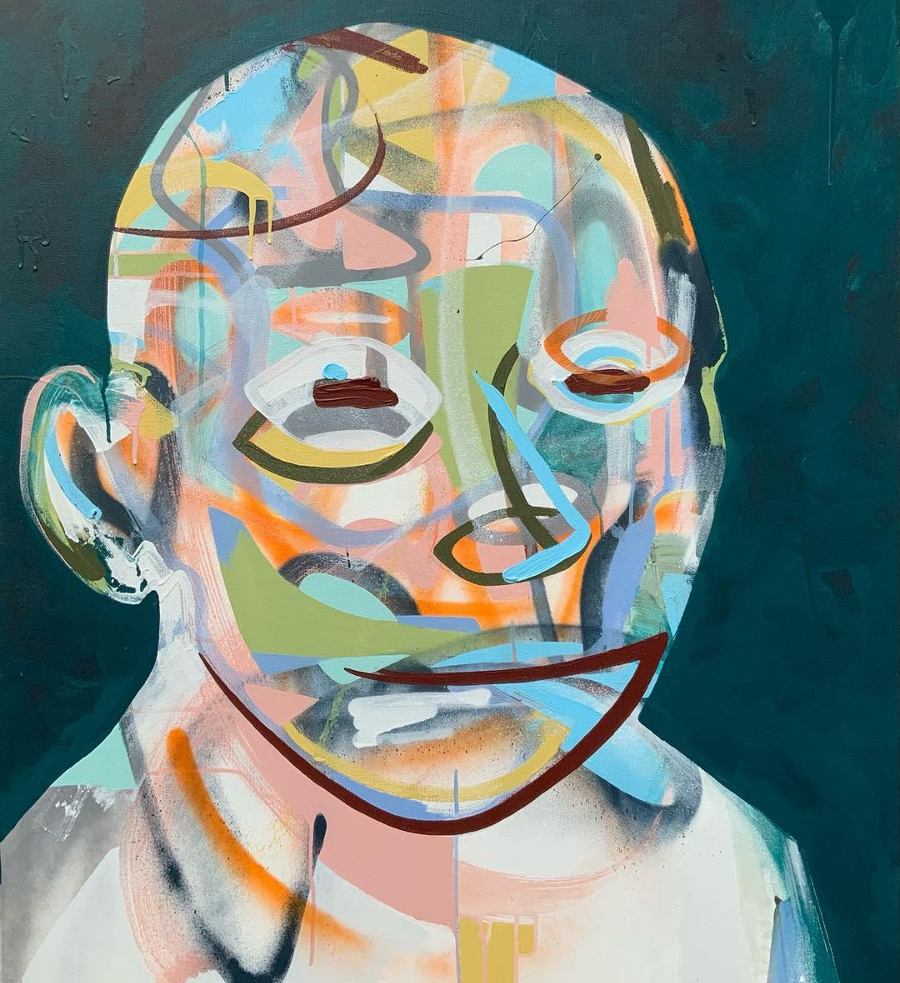

Which of your works best reflects your headspace today…and which piece embodies your stylistic evolution?
I’m proud of my most recent series “slow triumph”, which is perfectly reflective of my life’s work. It conveys my inner world, plus it’s a solid poster child for the intuitive development of my aesthetic.
So many of your artwork titles evoke beautiful or otherwise relatable revelations. “Fishing For That Which Cannot Be Expressed Logically” is an instant classic.
I’m not a religious person, but that’s definitely part of what that piece is exploring.
Which title do you think is your finest moment and why?
I created a 5ft x 6ft painting called “dissolve doubt and set sail in the assurance of favorable winds” which combines many different techniques and styles. I worked on it for a long time and had no idea what I was doing through much of the process. Still, I consider it one of my master pieces. It may lack the seamlessness that “slow triumph” achieves, but it’s probably more impressive. It really sums up something I’ve been trying to say for a long time.
I think that creating art is an active platform for contemplation. Sitting in front of a lake could probably help me gain similar insight, but I believe the element of creation amplifies the benefit.
Do you need to cross a particular creative accomplishment off your list in order to feel successful, or is it an ‘inside job’ for you?
I’m not a successful entrepreneur, but in my heart, I believe that I am a successful artist. Maybe someday I’ll be both. Sometimes it feels more like throwing spaghetti at the wall and having blind faith that someday it will work itself out. I’ll work odd jobs until I’m dead if that is required to continue my art practice.
Do you have a top-secret, non-abstract guilty pleasure for drawing zombie pin-up girls or fluffy kittens?
Zombie pin-up girls and fluffy kittens are rad, but I have little to no illustration skills. If I stare at something, I can copy it fairly well but I can’t imagine something and then sketch it from my mind. My sketchbook consists of stacks of typing paper that I quickly doodle weird faces on.


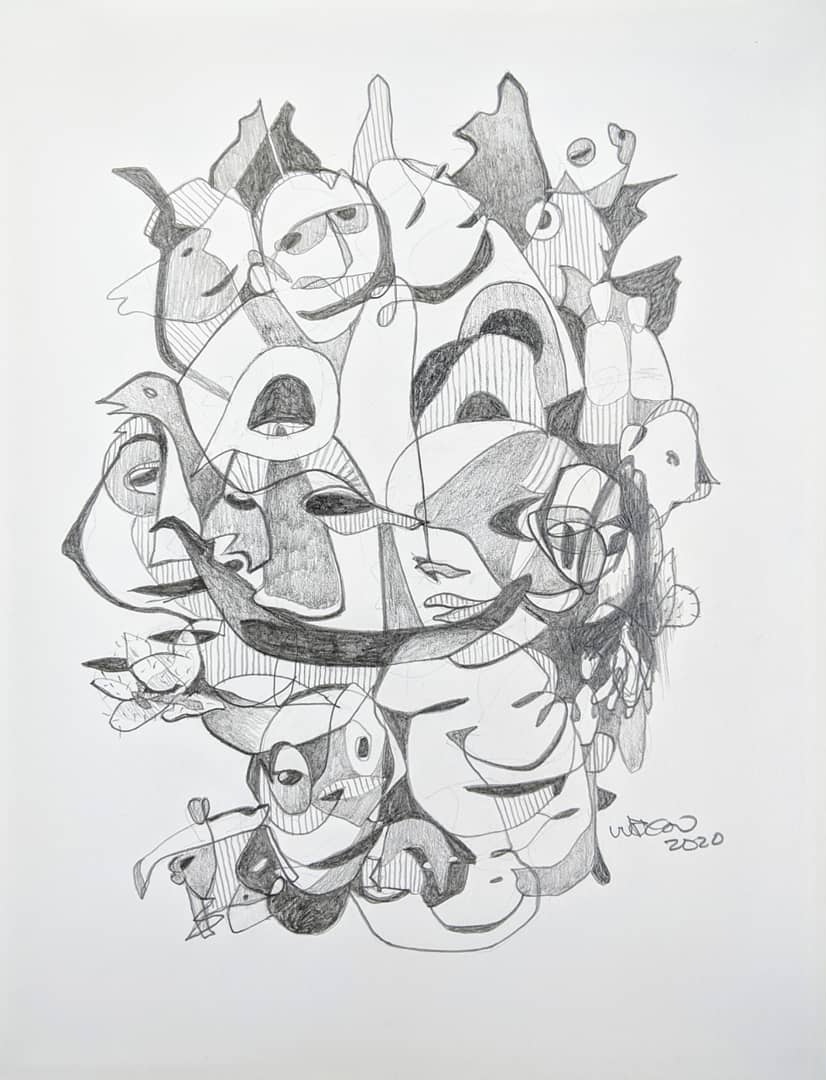
I’ll work odd jobs until I’m dead if that is required to continue my art practice.
Creative moment that has given you the purest high?
A well surfed wave in Bali around 10 years ago.
Art supply that sets your heart aflutter?
A relatively large blank canvas…the anticipation of creation.
Gazing at your art summons a similar feeling to being in a candy store. There is an intense visual rush coupled with the adrenaline of anticipating what each treat is going to taste like. Which candy captures the experience of visually consuming your art and why?
The everlasting gobstopper – different flavors in all the layers.


